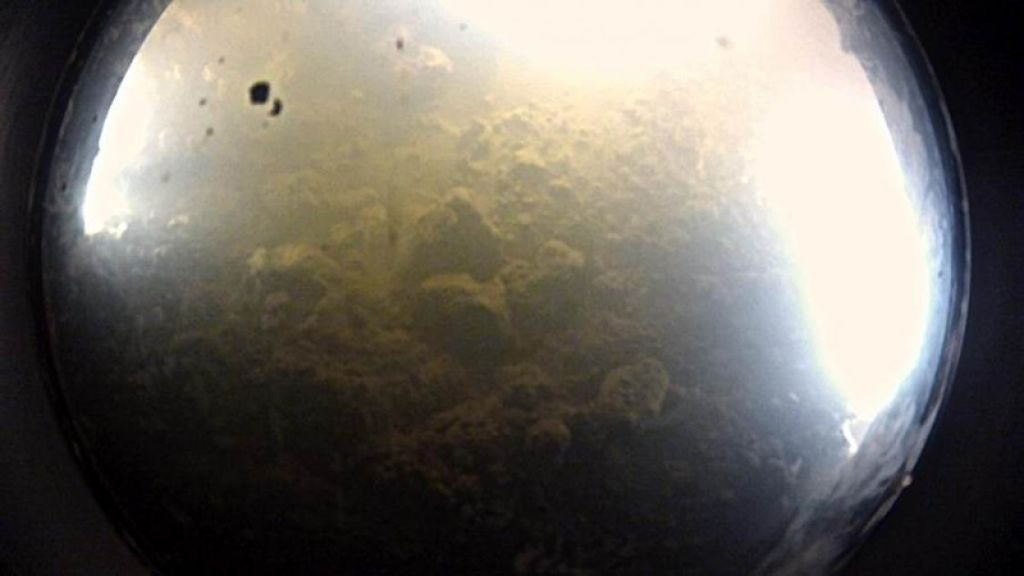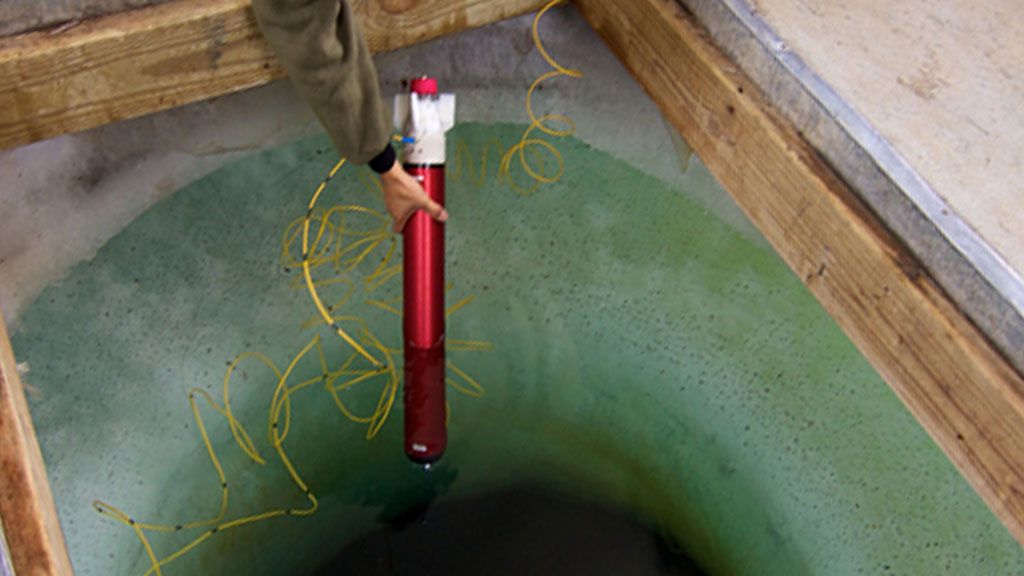The hydrology of subglacial lakes in Antarctica
First view of the interior of Subglacial Lake Whillans
© NASA
Scientists have known for some time that subglacial lakes - sizeable bodies of liquid water buried deep beneath the surface of the massive Antarctic Ice Sheet - influence how the ice sheet flows in the vicinity of these bodies of water. Yet the lakes and the massive and intricate subglacial hydrological network they are part of require further study to be well understood.
In this interview, Dr. Mark Skidmore discusses what is known about how subglacial lakes influence the hydrology of the ice sheet, ongoing and planned research to discover more about them, and where gaps remain in scientists’ understanding of these unique hydrological features.
Lake Whillans is part of a large subglacial hydrological network. Water flows into and out of the lake. Do scientists have a clear understanding of how the hydrological system in the region works?
Our understanding of the hydrological system in the region has been determined via a combination of satellite data and hydrological modelling. Repeat satellite laser altimetry has been measuring changes in the elevation of the ice surface over time. In certain locations these changes can be a few metres per year. Such large elevation changes over broad areas of the ice sheet are interpreted as subglacial lakes filling and/or draining.
Lake Whillans is in one of these regions where we see elevation changes in the ice sheet. There are data estimating volume changes in the lake over the past decade. Volume changes estimated from satellite data are also used as an input to hydrological models of the subglacial drainage network. But there is still uncertainty as to exactly how the regional hydrological system works.
Do you have a general idea of how the water comes in and out of Lake Whillans?
Researchers have determined the topography of the lake basin using ground-based geophysical investigations, including using seismic techniques and ice-penetrating radar coupled with high precision GPS measurements. From these data, researchers have been able to figure out where water flows into the lake, and where it flows out.
Where does the water that flows into the lake come from initially? There are no moulins in the Antarctic Ice Sheet like you have on the Greenland Ice Sheet.
There's no surface connection with meltwater on the surface of the Antarctic Ice Sheet like there is in the Greenland Ice Sheet or in Alpine glacial systems.
The water in subglacial lakes in Antarctica is created via ice melting at the base of the ice sheet. This basal melting is due to a combination of geothermal heat that comes from the interior of the Earth, and frictional heat, which is generated as the bottom of the ice sheet flows across bedrock or sediment.
What happens to the water once it exits Lake Whillans? Does it follow a specific flow path?
Once the water exits Lake Whillans, it flows some 60-70 km downstream from the lake into the Ross Sea. Colleagues of mine have identified the most likely flow path for the water beneath the ice sheet using hydrological models.
How does the hydrological system in Antarctica affect the flow of the ice sheet?
It has to do with the interconnectivity of the subglacial hydrological system.
Researchers are aware of the lubricating effects of water at the base of the ice sheet. There are areas where subglacial lakes are filling and areas where they are draining. If a lake drains rapidly, it has the potential to put a lot of water into the subglacial system downstream, and this can affect the flow rate of ice.
You can think about it this way: If all of the water in the subglacial system were flowing through a pipe-like network, it probably wouldn't have much effect on the way the ice flows. But if all of that water got distributed into a relatively thin film across a much broader area, it relieves friction between the ice sheet and the bed over a large area. This allows the ice to flow more easily and can lead to increased ice flow rates.
For example, changes in ice flow velocity from 2005-2007 in the lower part of Byrd Glacier (a large outlet glacier on the East Antarctic Ice Sheet that flows into the Ross Ice Shelf) have been linked to water draining from large subglacial lakes upstream.
Besides analyzing the samples that have already been taken from Lake Whillans, what else lies ahead for the WISSARD project?
The current plan is to go back to Lake Whillans in December 2013 to take more water and sediment samples. We also hope to go downstream from Lake Whillans and drill at the grounding zone (where ice from the ice sheet starts to flow out over the sea as an ice shelf) and recover water and sediment samples where the Whillans Ice Stream flows into the Ross Sea.
Over the long term, I've got colleagues involved in ongoing work. They've deployed seismometers on the ice surface and down the now frozen borehole drilled to access Lake Whillans. The seismometers will measure the sounds naturally produced by the ice and subglacial water to understand the flow properties of the Whillans Ice Stream.
How much do scientists currently know about subglacial lakes and the hydrological system of the Antarctic Ice Sheet, and how much would they like to know?
Significant advances have been made in the past 15-20 years. During this time, scientists have developed and implemented the technology that has made it possible to find subglacial lakes and better understand their connection to the broader hydrological system of the Antarctic Ice Sheet. However, I think we currently know a pretty limited amount. The Antarctic continent is 14 million km2, and we haven't been able to investigate all parts of the ice sheet.
The scientific community has identified about 400 subglacial lakes beneath the ice sheet. There are likely many more, but these unmapped regions of the Antarctic Ice Sheet can only be discovered with additional airborne radio echo sounding surveys.
In certain areas, there's evidence that some subglacial lakes are interconnected. Some lakes fill and drain with water, which has the potential to change ice flow dynamics downstream.
But at the moment, I'd say that we have a relatively limited knowledge of how the hydrology works at the scale of the entire ice sheet. There are certain areas where you have detailed analysis of ice velocity that can be linked to subglacial hydrological changes, as in the case of Byrd Glacier, which I mentioned before. But we don't currently have that level of detailed coverage for the entire ice sheet.
Nonetheless, there's a lot of ongoing research and future research work planned that will help us improve our understanding of the ice sheet's subglacial hydrology.

Mark Skidmoore
Dr. Mark Skidmore is a biogeochemist at Montana State University responsible for the geochemical analysis of samples taken from Lake Whillans under the WISSARD (Whillans Ice Stream Subglacial Access Research Drilling) project.





